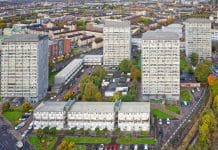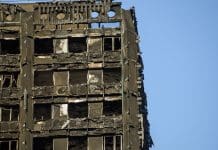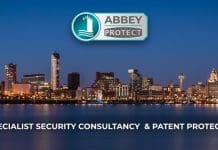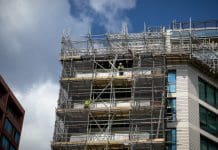Alistair Redler, Senior Partner at Delva Patman Redler LLP Chartered Surveyors draws attention to the surveyor’s role when matters concerning Rights of Light occur…
In many fields of surveying there is often a lack of awareness among clients of the range of knowledge and experience held by surveyors in any one discipline, or indeed the lack of it. An example is in the field of party wall surveying where those surveyors may or may not have knowledge and experience in dealing with rights of light. Traditionally, most right to light specialists started out in firms that specialise in party wall surveying and therefore have expertise in that field as well. However, most party wall surveyors have little, if any, rights of light knowledge. This therefore raises the question about whether a surveyor appointed to advise on party wall matters can be expected to identify potential right to light issues and whether there is a difference in their liability when acting for a Building Owner or an Adjoining Owner.
There is a liability on surveyors to report issues that they may identify. An obvious one is that any chartered building surveyor will be liable for reporting instances of unsafe working that they see on site even if they have no responsibility for that element of work.
In the case of a party wall surveyor, they will be scrutinising drawings that will show the building extension, additional massing or simply a raised wall and should be aware of situations where such additional massing will have some effect on light to a neighbouring property. A surveyor without suitable experience in assessing rights of light cannot be expected to advise whether a right to light injury will be caused but could be expected to raise the issue with their appointing owner, in order that an appropriate specialist can be consulted. Therefore, what basic knowledge should a surveyor acting as a party wall surveyor have to allow them to understand whether they should raise this as an issue, or whether doing so would simply incur unnecessary costs?
In the first place, a right to light is an easement and the most usual way of acquiring an easement is if a window has enjoyed light for 20 years. Therefore, if a building is more than 20 years old then it is likely to have a right to light unless there is a Deed or other legal agreement preventing it doing so. In fact, if a building is less than 20 years old it does not mean it will not have a right to light, but it is less likely.
A right to light is not actually a measurement of light itself. It is a right to a minimum adequate level of direct sky visibility in a room and only a very small amount of sky visibility at that. Right to light surveyors measure the area of a room that, at a working plane of 850mm above floor level, can see 0.2% of the total sky. To put that in context, that is approximately the amount of sky visible through the top third of a conventional sash window. There is no automatic right to all the light currently enjoyed, an injury only occurs if that is reduced below the adequate level. To make matters more complicated, there is no fixed rule and the Courts can decide in each case whether the easement has been interfered with.
For a surveyor trying to identify whether a right to light injury may occur however, they can do that by assessing the extent to which a room will lose direct sky visibility. For example, a room with patio doors looking onto a large garden will be left with adequate light even if a twenty storey tower block is located along one garden boundary to the side. On the other hand, a small window to a large room looking directly at a neighbouring property is very likely to experience a right to light injury if the neighbour’s building is being raised in height and it will only be possible to see sky through the window in the front half of the room.
Calculation of right to light is sufficiently complicated that most firms now use computer programmes to do this, and it is unsafe for surveyors to give a definite opinion to a client or appointing owner without being certain of their position, not least because this could lead to expensive litigation. However, alerting the issue at an early stage so that the client can take advice can save time and costs later on.
There is of course no right to sunlight and no right to a view, so once a development has planning consent, there is no risk to a project if it does obstruct a view or obstruct sunlight to a window or garden. ■
. . . . . . . . . . . . . . . . . . . . . . . . . . . . . . . . . . . . . . . . . . . . . . .
Alistair Redler BSc FRICS
Senior Partner
Delva Patman Redler LLP
Tel: 020 7936 3668
alistair.redler@delvapatmanredler.co.uk













![[VIDEO] Using digital twins to simplify complex fire barrier assessment Read more about how Trident Fire Protection utilised digital twin technology to conduct a fire barrier assessment in a complex space with tight areas and poor access in a roof void](https://www.pbctoday.co.uk/news/wp-content/uploads/2024/08/Trident-complex-roof-area-218x150.png)